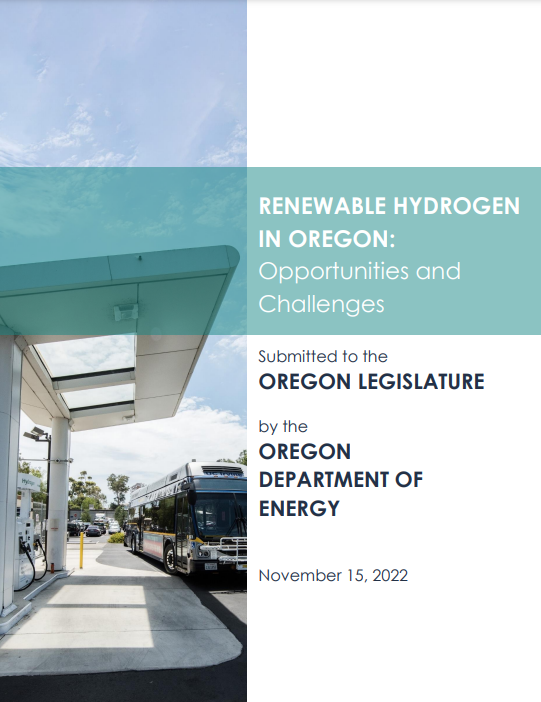SB 333 (2021) directed the Oregon Department of Energy to conduct a study on the potential benefits of, and barriers to, production and use of renewable hydrogen in Oregon.

Passed by the Oregon Legislature in 2021, SB 333 directed the Oregon Department of Energy to study and report on a number of elements related to renewable hydrogen and how it might fit into the state's existing renewable energy and greenhouse gas reduction policies and goals, including:
- The total amount of hydrogen currently used in Oregon;
- Potential applications for renewable hydrogen by 2030;
- Potential for coupling renewable electricity generation with renewable hydrogen production to increase resiliency or provide flexible loads;
- How forecasted costs for renewable hydrogen could affect adoption in Oregon; and
- The technological, policy, commercial, and economic barriers to adoption of renewable hydrogen in Oregon.
ODOE submitted the report to the Legislature on November 15, 2022.
Pacific Northwest Hydrogen Hub
In October 2023, the U.S. Department of Energy selected the Pacific Northwest Hydrogen Association's PNWH2 Hub for award negotiations as one of the federal Infrastructure Investment & Jobs Act
Regional Clean Hydrogen Hubs following a competitive nationwide process. The PNWH2 Hub is eligible to receive up to $1 billion in federal funding over
four DOE-defined development phases spanning nine years, with $20 million allocated for Phase 1. DOE will evaluate the hub’s activities and deliver go/no-go decisions at each phase.
Stakeholder Engagement
ODOE provided opportunities for stakeholders to provide feedback on the scope of the study, on relevant data sets, and on key findings.
Renewable Hydrogen 101
Hydrogen is currently used in a number of industrial processes – it is a fundamental input for manufacturing ammonia, which is then used for fertilizer production; it is used to process crude oil into refined fuels, like gasoline and diesel; and it is also used in the metallurgic industry. However, most of the hydrogen produced today is derived from natural gas or coal, which is considered to be “grey" hydrogen. “Blue" hydrogen is also derived from fossil fuels but with the associated carbon emissions captured and stored. Most “green" or renewable hydrogen is produced using renewable electricity to power an electrolyzer that splits water into its component parts of oxygen and hydrogen. SB 333 refers to renewable hydrogen as “hydrogen derived from energy sources that do not emit greenhouse gases." Renewable hydrogen could be used to replace grey hydrogen where it is currently used, as a transportation fuel, or as a replacement for natural gas in some applications.